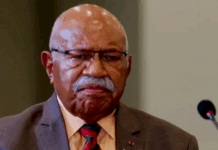
After more than half a century without clarity on the identity of perpetrators or those who orchestrated the event, some survivors and victims of Indonesia’s 1965 purge hope that the government will rehabilitate their names as they have been stigmatised in the past as enemies of the state.
The stigma does not end with themselves, but also extends to their children and grandchildren. The number of the people affected by the 1965 tragedy, whether murdered, tortured, raped or detained without trial, could reach into the hundreds of thousands.
“I hope the government will rehabilitate all survivors and annul all discriminative laws against the 1965 victims,” said Kusnendar, an 83-year-old survivor, during a two-day symposium on 1965 in Jakarta this week.
He also expressed his concern that there were still state documents that discriminated against them. Presidential Decree No. 28/1975, for example, prevents members or sympathisers of the Indonesian Communist Party (PKI) who worked as civil servants from receiving their pensions.
Meanwhile, Presidential Decree No. 16/1990 prevents former PKI members from working as civil servants or joining the Indonesian Military.
The kidnapping and murder of six Army generals on Sept. 30, 1965, led to a purge of communists and alleged communist sympathisers by the military under the leadership of Soeharto.
In the purge, countless thousands were murdered, tortured and arrested without trial. It is estimated that between 500,000 to 1 million people were killed during the “cleansing” of people with any leftist connections, regardless of their age or level of connection.
Generals murder
“I was beaten up when I arrived at the Budi Kemuliaan penitentiary as I was accused of being involved in the murder of the generals,” said Kusnendar, adding that he was arrested on October 10, 1965, in Jakarta, because he was involved in a labor union allegedly affiliated with the PKI.
He was also accused of harboring sympathies with the PKI’s youth arm, Pemuda Rakyat. Kusnendar moved from one prison to another, including the Cipinang and Salemba penitentiaries in Jakarta, the Nusakambangan prison island in Central Java and Buru Island in Maluku, often remembered as the “Island of Exiles”, in 1969.
Yohanes Winaryo, a 72-year-old survivor, was arrested on Nov. 2, 1965, because of his involvement in the Indonesian Youth and Students Association (IPPI), allegedly affiliated with the PKI.
“We had no affiliation with the PKI as the IPPI just held study-group sessions or sporting events. We even helped the government eradicate illiteracy going door-to-door to the people’s houses,” he said.
However, Yohanes was forced to work without pay as a stonemason in Central Java until he was released in 1970. Since then, he has been “marked” as a former political prisoner.
“Our main demand is rehabilitation. The government should bring back our good name in society. It’s more important than compensation,” he said.
Because of the stigma attached to them, the 1965 victims had to live hard life. Kusnendar was released in 1978 and reunited with his family in Jakarta.
However, he said his wife was forced to divorce him as a prerequisite to working in the Jakarta Education Agency because of his status as a former political prisoner.
Kusnendar earned a living working as an insurance salesman, a scavenger and a thesis typist in a printing shop.
High school teacher brings alternative narratives to 1965 purge









































